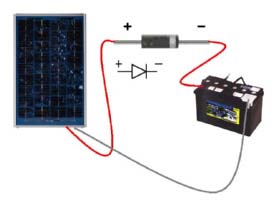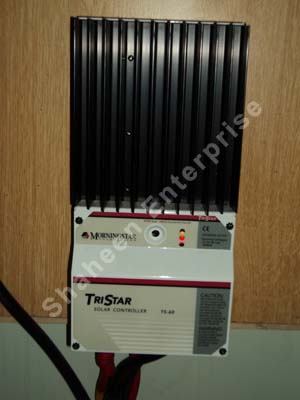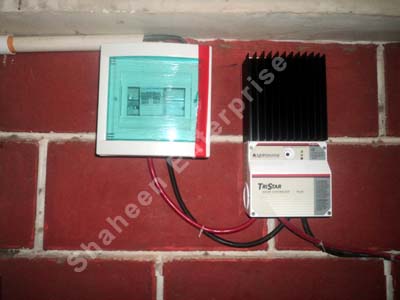or bigger systems like tube well or water pumping they are used high
voltage charge controllers, called MPPT (Maximum Power Point Tracker)
charge controllers. MPPT charge controller can convert dc-dc voltage.
Example used in 24, 38, 48 volt systems. MPPT charge controllers are
used with higher power panels like 135 watt and higher panels.
-
Charge controls come in all shapes,
sizes, features, and price ranges. They range from the small 4.5 amp
(Sun guard) control, up to the Apollo 80 amp MPPT programmable
controller with computer interface. Often, if currents over 40 amps
are required, two or more 20 to 40 amp units are wired in parallel.
The most common controls used for all battery based systems are in
the 6 to 40 amp range.
-
-
Simple 1 or 2 stage controls which
rely on relays or shunt transistors to control the voltage in one or
two steps. These essentially just short or disconnect the solar
panel when a certain voltage is reached. For all practical purposes
these are dinosaurs, but you still see a few on old systems. Their
only real claim to fame is their reliability - they have so few
components, there is not much to break.
3-stage and/or PWM such Morningstar, Xantrex, BZ Products, Blue Sky,
Steca, and many others. These are pretty much the industry standard
now, but you will occasionally still see some of the older
shunt/relay types around, such as in the very cheap systems offered
by discounters and mass marketers.
The maximum power power tracking ones (MPPT), such as those made by
Blue Sky Energy and Outback Power. These are the ultimate in
controllers, with prices to match - but with efficiencies in the 96
to 98% range, they can save considerable money on larger systems
since they provide 15 to 30% more power to the battery. For more
information, see our article on MPPT.
Most controllers come with some kind of indicator, either a simple
LED, a series of LED's, or digital meters. Some newer ones, such as
the Outback MX60 and a few others now have built in computer
interfaces for monitoring and control. The simplest usually have
only a couple of small LED lamps, which show that you have power and
that you are getting some kind of charge. Most of those with meters
will show both voltage and the current coming from the panels and
the battery voltage. Some also show how much current is being pulled
from the LOAD terminals.
All of the charge controllers that we stock are 3 or 4-stage PWM
types, including the MPPT units. (in reality, "4-stage" is somewhat
advertising hype - it used to be called equalize, but someone
decided that 4 stage was better than 3). And now we even see one
that is advertised as "5-stage".
What is Equalization?
Equalization does somewhat what the name implies - it attempts
to equalize - or make all cells in the battery or battery bank of
exactly equal charge. Essentially it is a period of overcharge,
usually in the 15 to 15.5 volt range. If you have some cells in the
string lower than others, it will bring them all up to full
capacity. In flooded batteries, it also serves the important
function of stirring up the liquid in the batteries by causing gas
bubbles. Of course, in an RV or boat, this does not usually do much
for you unless you have been parked for months, as normal movement
will accomplish the same thing. Also, in systems with small panels
you may not get enough current to really do much bubbling.

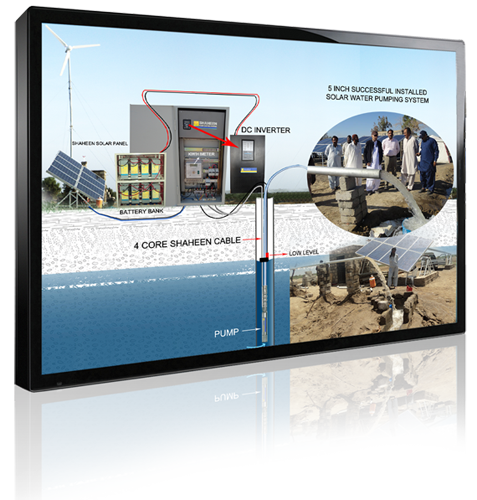


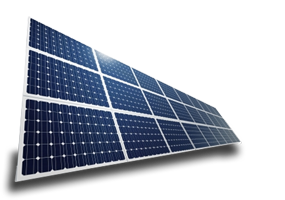
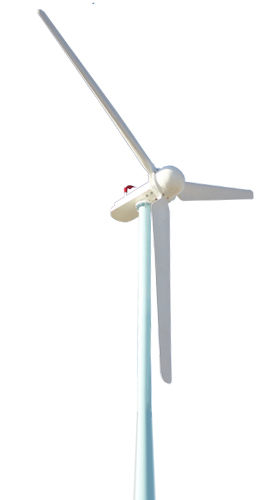 state-of-the-art designSolar Water Pumping System
state-of-the-art designSolar Water Pumping System Wind Power Use itdon't let it blow away!
Wind Power Use itdon't let it blow away!


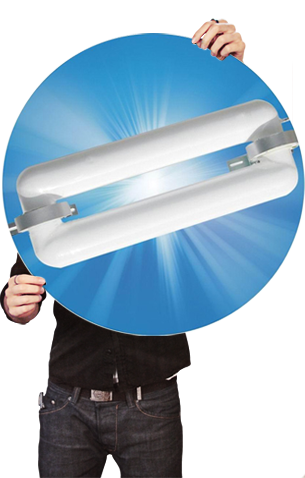

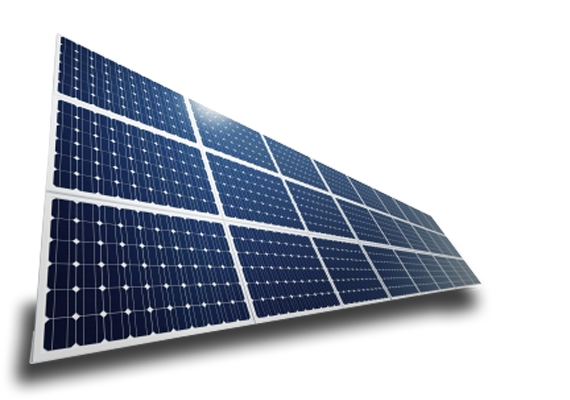
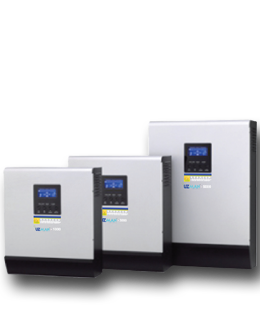

 Most Experienced inSolar, Wind and Hybrid Technology
Most Experienced inSolar, Wind and Hybrid Technology SOLARBattery BanksShaheen Enterprise
SOLARBattery BanksShaheen Enterprise Water PUMP SystemShaheen Enterprise'sFeature Project
Water PUMP SystemShaheen Enterprise'sFeature Project
